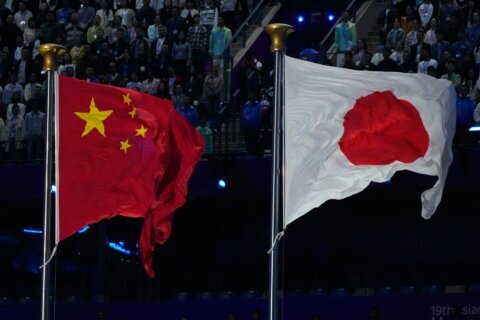A global economy requires a global portfolio.
With U.S. stocks peaking one day and tanking the next, you may want to step up your international exposure. Diversifying internationally can cushion sharp price swings in your portfolio. “We exist in a global economy, so why not invest globally?” says George Padula, principal and chief investment officer for Modera Wealth Management. In fact, approximately half of the global equity market cap is overseas, so if you overlook international investments, you’re missing out on growth beyond our borders. To get the best benefit, choose less correlated assets, like bonds or real estate, that move in opposite directions from U.S. stock markets. There are many ways to go global.
Go one-stop shopping with a broad index fund.
An international index fund or an exchange-traded fund is the perfect one-stop shop for the minimalist investor who wants international exposure without owning a stable of stocks or funds. Keep in mind, though, that many “global” funds allocate a large percent of assets to U.S. stocks, says Greg Hammond, president of Hammond Iles Wealth Advisors. “To truly add international exposure to your portfolio, consider using an investment that excludes the United States.”
Take the small-cap route.
International small-cap stocks have a double benefit, lower correlation to U.S. large caps and higher 10-year returns than U.S. or international large-cap stocks. Between 1996 through September 2017, the annualized rolling monthly 10-year return of the Russell Global ex-US Small Cap Index was 8.41 percent, handily beating the Russell 2000 small-cap U.S. index’s 6.98 percent and the Russell Global ex-US Large Cap Index’s 5.82 percent returns. To cash in on foreign small caps, consider a foreign small-cap fund that excludes U.S. companies, such as Vanguard’s FTSE All-World ex-US Small Cap ETF (ticker: VSS). It tracks the FTSE Global Small Cap ex US Index of 3,363 stocks of companies in 46 countries in both developed and emerging markets.
Get the benefit of established foreign markets.
If investing overseas worries you, stick to the stocks of established countries outside of the U.S. and Canada. The MSCI EAFE index represents large- and mid-cap stocks across 21 developed markets spanning Europe, Australasia and the Far East. There are many EAFE index funds from which to choose including the iShares MSCI EAFE ETF (EFA), which allocates more than 70 percent of assets to Japan, the eurozone and the United Kingdom.
Tap the potential of emerging markets.
Compared to funds that invest in developed markets, emerging market funds offer higher growth — and greater volatility. Low per-capita income and rapidly changing economies help propel the growth in emerging markets, which translates into higher returns. Between 2004 and 2017, the MSCI emerging markets equity index, representing 23 countries, outperformed the S&P 500 in eight of 14 years, Padula says.
Make a play for Europe.
This is a good time to tap European large-cap stocks, says Gene Salamon, a portfolio manager and managing partner at Three Bridges Capital. European companies are enjoying strong global growth and record low corporate debt. Even better, European stock prices are currently cheaper than their U.S. counterparts and reward investors waiting for price appreciation with juicy dividends. Plus, there’s economic stimulus from the European Central Bank’s negative interest rate policy and quantitative easing to fuel returns.
Bet on a particular country or region.
Individual country funds or region-based ETFs offer a chance to hone in on specific areas of the world, Padula says. But country bets carry greater risk and volatility due to their lack of diversification. So, for example, if you’re a speculative investor or seeking to capitalize on an international trend, such as China’s growing economy, you might consider a fund like the iShares China Large-Cap ETF (FXI), which tracks the FTSE China 50 index — China’s 50 largest companies.
Buy foreign stocks directly.
Most international stocks are listed as American depositary receipts. ADRs were created to make investing easier in foreign companies, including well-known names such as Nokia (NOK) and Unilever (UL). “International stocks trade at independent valuations, which may be cheaper or more expensive than U.S. stocks,” says Jeremy Bryan, a portfolio manager at Gradient Investments. For example, Canada’s largest bank Toronto-Dominion (TD) has a price-earnings ratio of 13.42, compared with 15.82 for U.S. financial stocks.
Think globally with fixed income, too.
International bonds can beef up the income from a portfolio of U.S. bonds, where yields remain low despite rising interest rates. From sector bond funds to broad all-world offerings, investors have plenty of choices. Padula recommends the Pimco Foreign Bond Hedged Fund (PFORX) for broad foreign fixed-income investing. Currently yielding 1.5 percent, this actively managed fund hedges against currency exposure to reduce volatility, and “having an allocation to overseas fixed-income investments can provide diversification against the risk of rates rising in the U.S.,” Padula says.
Capitalize on the world’s real estate.
The global real estate market nearly matched U.S. stock returns the past 11 years and outperformed international stocks, according to the Schwab Center for Financial Research. A global real estate fund isn’t just diverse geographically; investments run the gamut to include office complexes, apartment buildings, malls and hotels. In addition, real estate investment trust dividends average 4 percent, twice the S&P 500’s dividend average. Currently yielding 4 percent, the Schwab Fundamental Global Real Estate Index Fund (SFREX) invests in real estate companies including REITs, except for timber and mortgage REITs.
Editor’s Note: Barbara Friedberg owns shares in the iShares MSCI EAFE ETF.
More from U.S. News
The 10 Best European Stock ETFs on the Market
Chinese ETFs: 9 Ways to Play the Middle Kingdom
9 International ETFs That Are Off the Beaten Path
9 Strategies for Tapping the World’s Growth originally appeared on usnews.com







